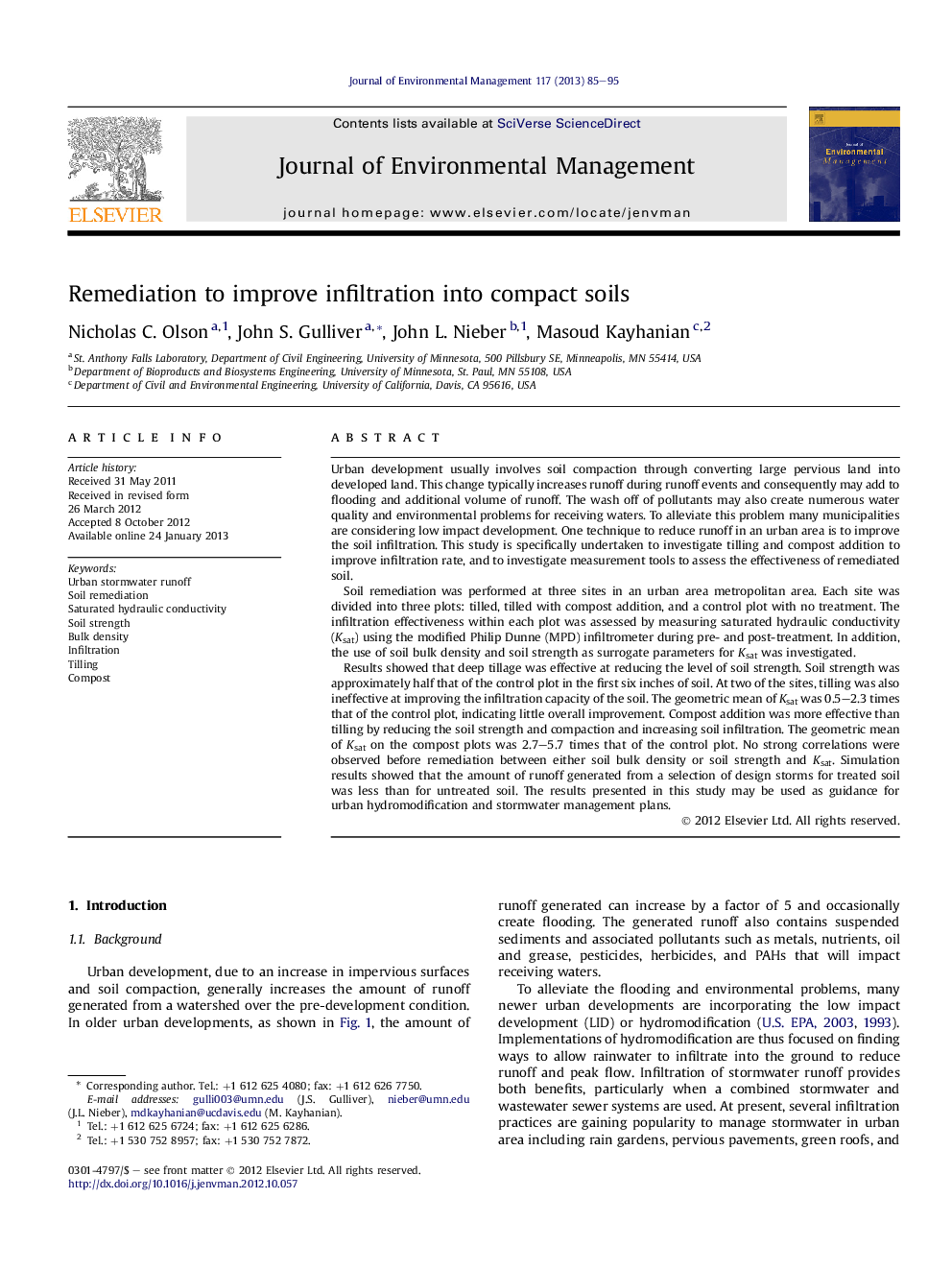| کد مقاله | کد نشریه | سال انتشار | مقاله انگلیسی | نسخه تمام متن |
|---|---|---|---|---|
| 1056304 | 1485295 | 2013 | 11 صفحه PDF | دانلود رایگان |

Urban development usually involves soil compaction through converting large pervious land into developed land. This change typically increases runoff during runoff events and consequently may add to flooding and additional volume of runoff. The wash off of pollutants may also create numerous water quality and environmental problems for receiving waters. To alleviate this problem many municipalities are considering low impact development. One technique to reduce runoff in an urban area is to improve the soil infiltration. This study is specifically undertaken to investigate tilling and compost addition to improve infiltration rate, and to investigate measurement tools to assess the effectiveness of remediated soil.Soil remediation was performed at three sites in an urban area metropolitan area. Each site was divided into three plots: tilled, tilled with compost addition, and a control plot with no treatment. The infiltration effectiveness within each plot was assessed by measuring saturated hydraulic conductivity (Ksat) using the modified Philip Dunne (MPD) infiltrometer during pre- and post-treatment. In addition, the use of soil bulk density and soil strength as surrogate parameters for Ksat was investigated.Results showed that deep tillage was effective at reducing the level of soil strength. Soil strength was approximately half that of the control plot in the first six inches of soil. At two of the sites, tilling was also ineffective at improving the infiltration capacity of the soil. The geometric mean of Ksat was 0.5–2.3 times that of the control plot, indicating little overall improvement. Compost addition was more effective than tilling by reducing the soil strength and compaction and increasing soil infiltration. The geometric mean of Ksat on the compost plots was 2.7–5.7 times that of the control plot. No strong correlations were observed before remediation between either soil bulk density or soil strength and Ksat. Simulation results showed that the amount of runoff generated from a selection of design storms for treated soil was less than for untreated soil. The results presented in this study may be used as guidance for urban hydromodification and stormwater management plans.
Urban soil remediated with compost substantially increased saturated hydraulic conductivity and hence increased the infiltration capacity of soil.Figure optionsDownload as PowerPoint slideHighlights
► Measurements are a tool for infiltration capacity of remediated urban soil.
► Tillage with compost addition increased infiltration capacity by 2–6 fold.
► Soil strength and soil bulk density are not good parameters to assess infiltration rate.
► Soil remediation can reduce runoff from short, high intensity storms.
► Runoff from control plots were >30 times that of tillage and compost plots for 2-year, 1-h storms.
Journal: Journal of Environmental Management - Volume 117, 15 March 2013, Pages 85–95